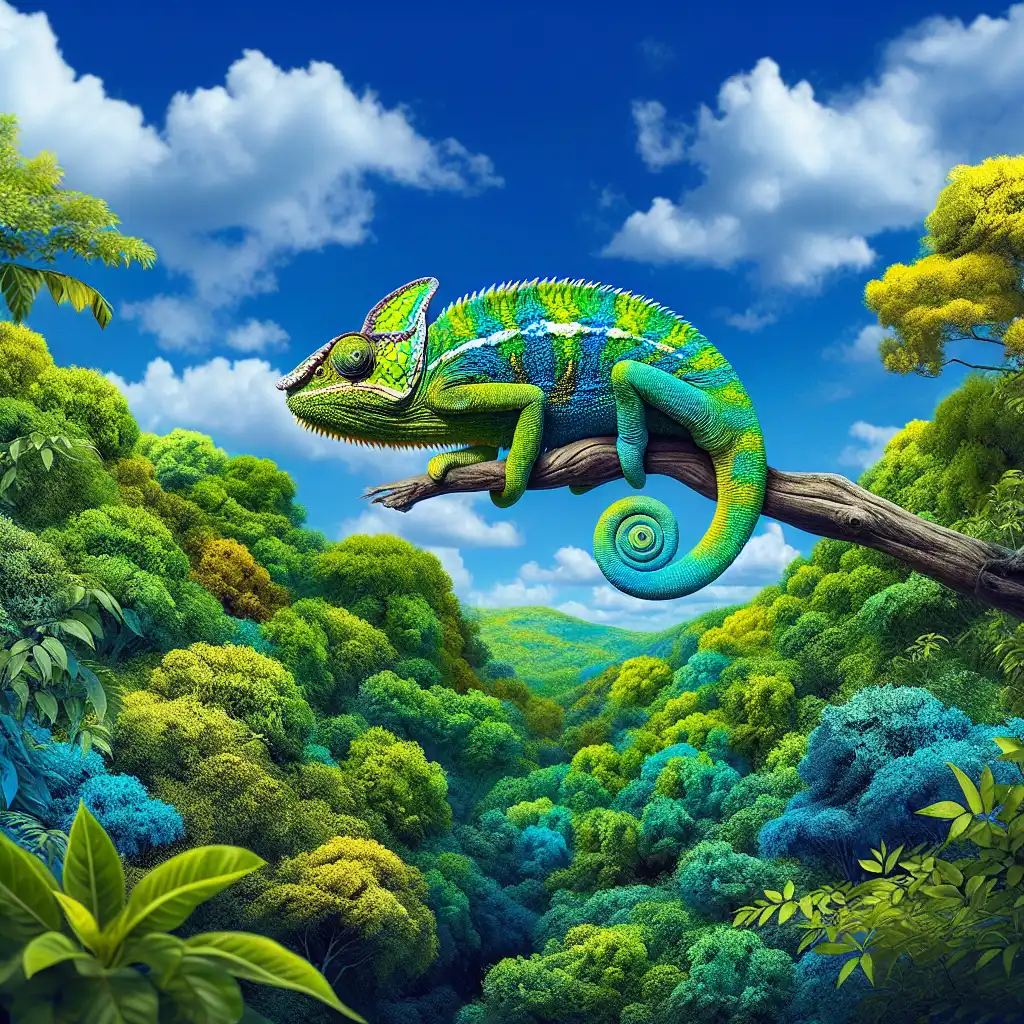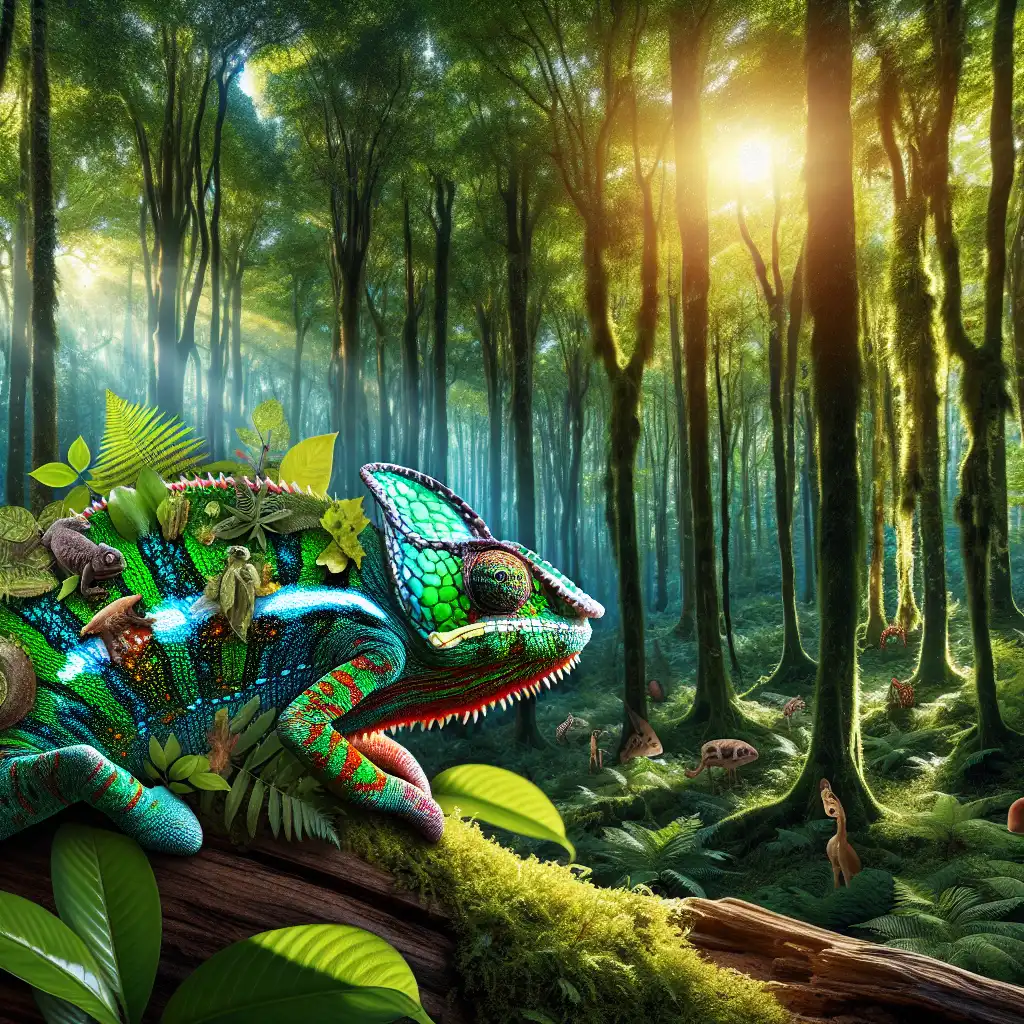
Chameleon
Color Metaphor
The color changes of a chameleon symbolize adaptability or camouflaging one's appearance or intentions.  Like a chameleon, he adjusts his presentation to suit the audience's mood.
Like a chameleon, he adjusts his presentation to suit the audience's mood.
Natural Camouflage
Chameleons change color primarily for communication and temperature regulation, not just for blending in.  Despite popular belief, a chameleon's color change isn't always about hiding from predators.
Despite popular belief, a chameleon's color change isn't always about hiding from predators.
Cultural Symbolism
Chameleons are sometimes used in stories and art to represent versatility or deceit.  In the tale, the chameleon was a symbol of survival through cunning adaptation.
In the tale, the chameleon was a symbol of survival through cunning adaptation.